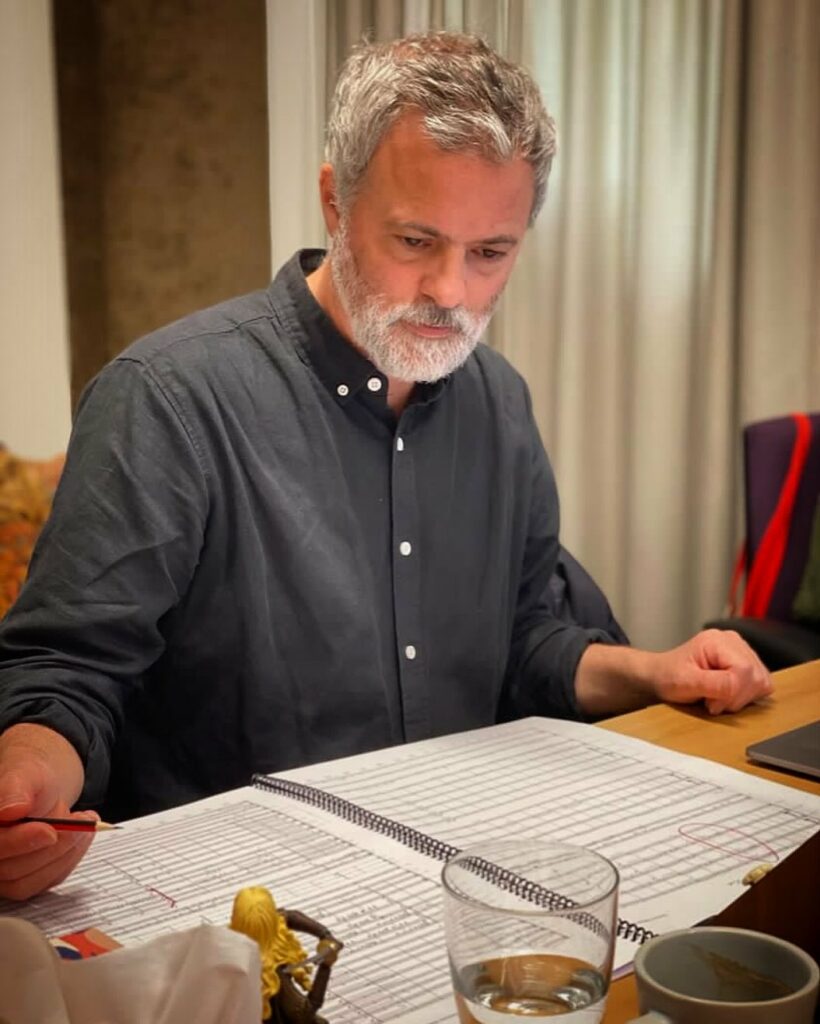It’s not long until Warner Bros. Animation unveils its long-awaited second look at Kenji Kamiyama’s The Lord of the Rings: The War of the Rohirrim at the 2024 Annecy Film Festival.
The 90-minute presentation, hosted by Andy Serkis (Hunt for Gollum tie-in, anyone?), will feature the first 20 minutes (or so) of Kamiyama’s 130-minute-long feature anime. People with good memories will recognise how this mirrors their appearance at the same event this time last year.

It will be interesting to hear if they show it all in single sequence, or as a series of snapshots as they did last year. It will also be very interesting to hear about the progress the animation team has made on the raw, rather-unfinished footage that they screened last year.
The Annecy presentation will also finally bring some support to the lonely promotional furrow that composer Stephen Gallagher has been ploughing this year.
On our Discord channel dedicated to all things WOTR, we’ve been closely following the trail of hints he’s been leaving on his Instagram account but I’ve long thought his efforts deserve a wider audience. So I’m going to take a thousand words or so to update you all on what’s been happening on the musical front!
Gallagher, in case you’re unaware, is a New Zealand composer and award-winning music editor. He is probably best-known to Tolkien fans for his work on The Hobbit where, as well as working as music editor on all three films, he composed the songs ‘Blunt the Knives’ and ‘The Torture Song’ for An Unexpected Journey. Read up on him in our backgrounding post here.
He obliquely revealed on his Instagram account around the end of February that The War of the Rohirrim production had shifted to scoring and recording music.
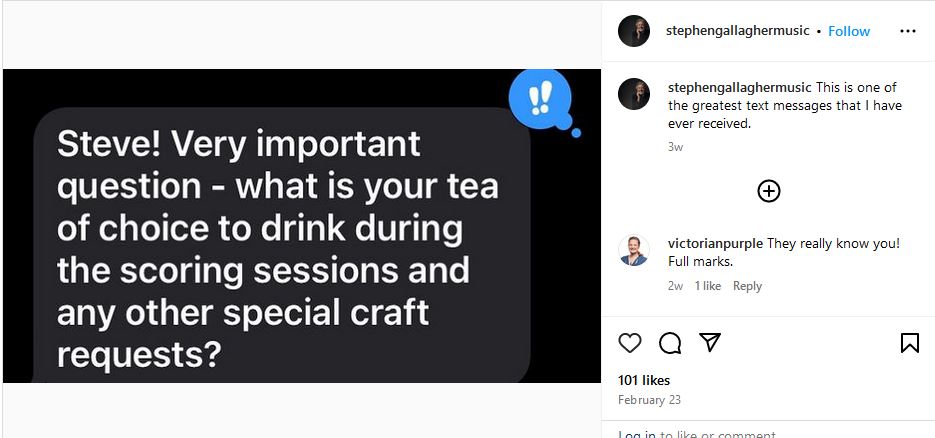
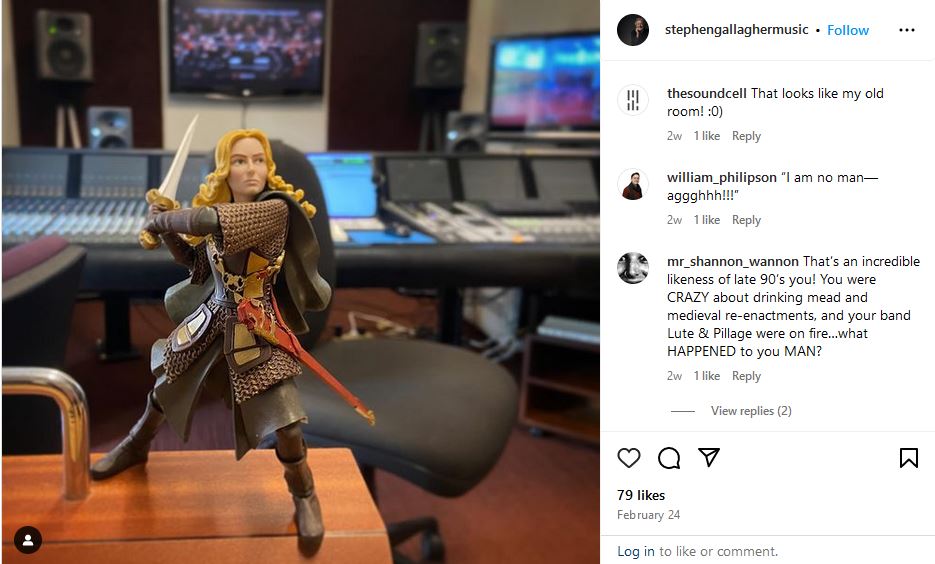
On February 25 he posted a tiny snippet of score from a piece titled “2. M03 Business” with a simple caption “Time for business…”, showing parts for at least Cor Anglais (otherwise known as English Horn), bass clarinet, (probably bass) bassoon and crumhorn. Additional, unknown, instruments are obviously further down.

Despite the absence of a key signature, TORn Discord moderator Lasswen promptly placed the score snippet into notation program Musescore4 to gauge what it might sound like, working on the assumption that it was scored in concert pitch.
We’d like to emphasise that this is our approximation based on the score provided with the notation inputted into a program to recreate the sheet music we could see, then exported as an mp3 — it’s not the *actual* thing. You can have a listen below.
2. M03 BUSINESS
Lasswen notes that
“… aside from what other instruments are in that piece, let alone missing from that sample (eg. there’s two bars after the contra bassoon that we don’t know if it’s silence or something else lower on the score is filling in), I think it’s also interesting to note that typically if piccolo, flute, oboe or trumpets were in it they would have been in that section we saw. Most of what’s there are low bass instruments.”
We like the creepy, unsettled sound.
Now, that might indicate a monster theme since both Executive Producer Philippa Boyens and Producer DeMarco have mentioned we should expect monsters — that there are things lurking in the White Mountains.
But there are other possibilities — particularly if, as we suspect, the numbers indicate that “Business” is a piece that arrives early in the film.
The initial, fatal conflict that arises between Helm and Freca is underpinned by an enormous amount of unease. Further, Freca, is there on his own business — the business of marriage.
‘To one of these councils Freca rode with many men, and he asked the hand of Helm’s daughter for his son Wulf. But Helm said: “You have grown big since you were last here; but it is mostly fat, I guess”; and men laughed at that, for Freca was wide in the belt.
‘Then Freca fell in a rage and reviled the king, and said this at the last: “Old kings that refuse a proffered staff may fall on their knees.” Helm answered: “Come! The marriage of your son is a trifle. Let Helm and Freca deal with it later. Meanwhile the king and his council have matters of moment to consider.”
The Lord of the Rings. Appendix A: The House of Eorl.
The “business” of the title may well be the attempt to arrange a match between Wulf and Hera. It seems an excellent fit. Could it be as Freca enters the Golden Hall and approaches Helm’s throne?
The “courtly” tone of the crumhorn could be a good fit for such an event:
The seemingly extensive use of horns also makes us wonder whether, at some point we will hear the famed Horn of Helm resounding through the Deeping Valley.
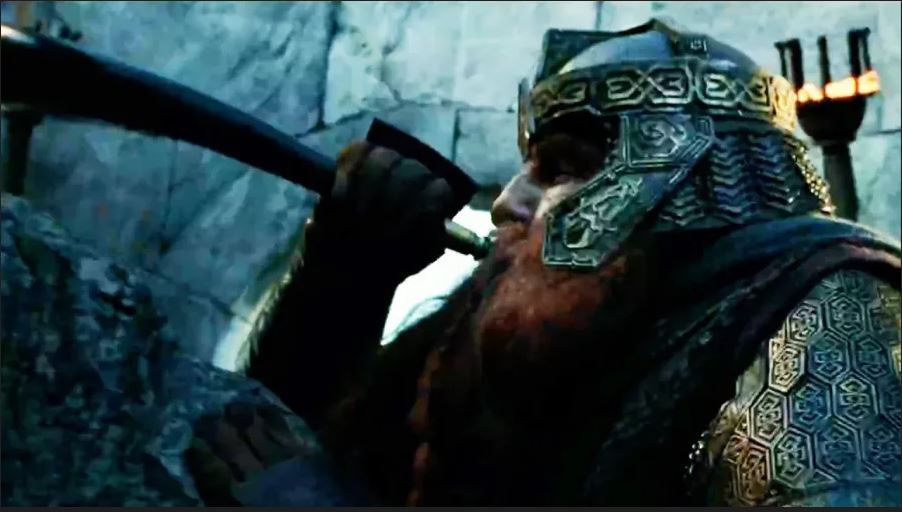
Helm had a great horn, and soon it was marked that before he sallied forth he would blow a blast upon it that echoed in the Deep; and then so great a fear fell on his enemies that instead of gathering to take him or kill him they fled away down the Coomb.
The Lord of the Rings. Appendix A: The House of Eorl.
Gallagher’s Instagram posts indicate that he spent some time in Wellington finalising the musical score at Stroma FilmWorks and has been working with noted sound producer and mixer Pin3hot who was previously Supervising Music Editor for Peter Jackson’s The Hobbit and Lord of the Rings: Return of the King.
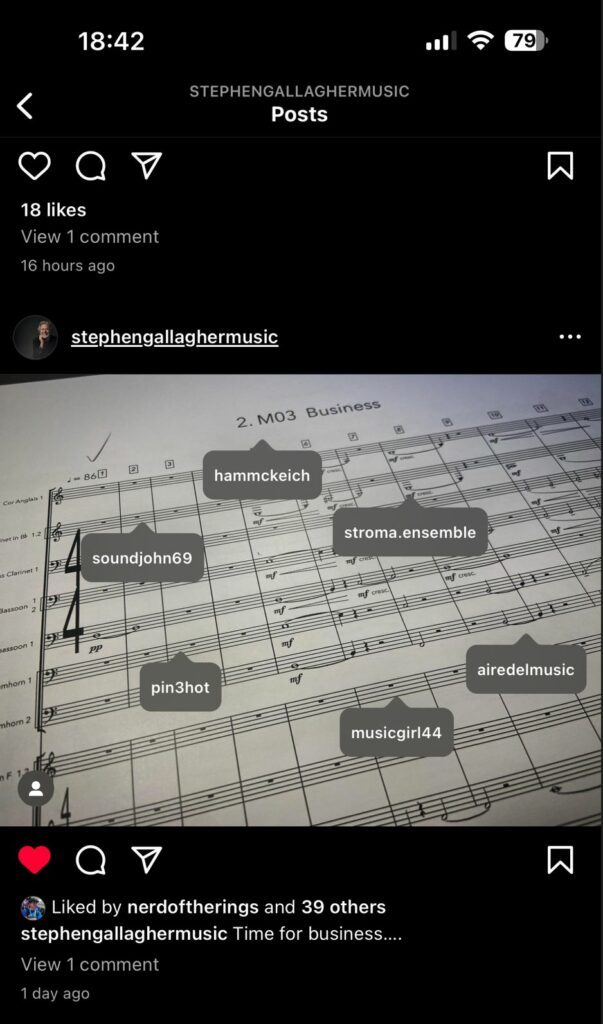
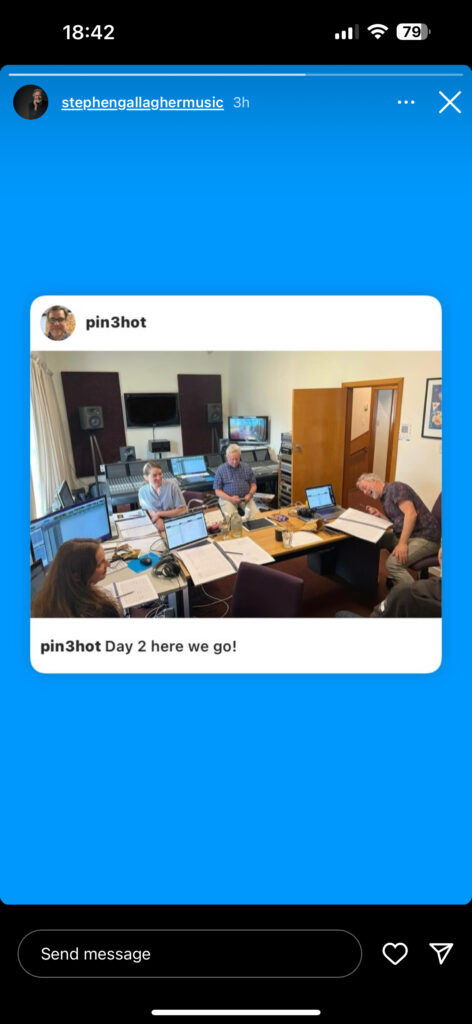
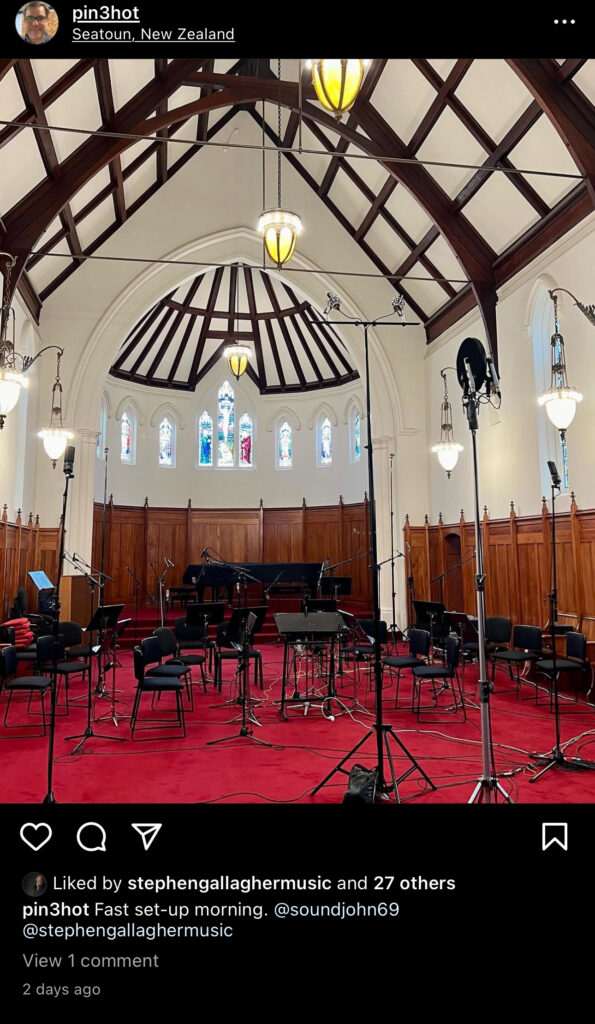
In a perhaps-weird coincidence, Pin3hot’s credits also include Ultraman. Ultraman, of course, was overseen by The War of the Rohirrim director Kenji Kamiyama (alongside Shinji Aramaki), and produced by Sola Entertainment — Joseph Chou’s company that happens to be handling production and animation for The War of the Rohirrim.
As near as we can tell scoring seems to have been finalised on or around February 26.
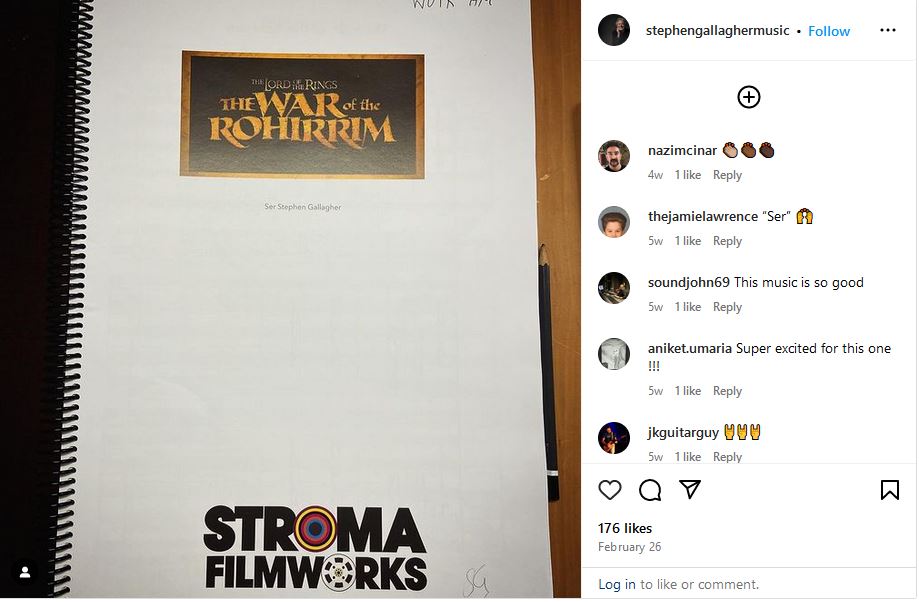
A few days later, on March 2, Gallagher posted another snippet of score labelled “Helm Hammerhand Still Stands” with a simple message: “What a week!”.
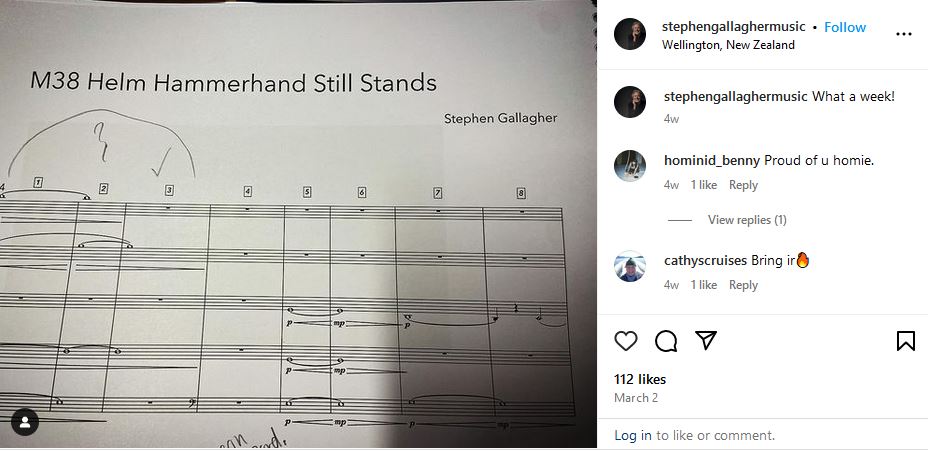
Lasswen, on TORn’s Discord server, offered some analysis, observing that:
- This time all the instruments were concealed.
- Although there is no tempo or clefs, the bottom stave changes to bass clef, suggesting the others are in all treble, and that there are fewer bass instruments present than in Business.
- Since the five visible staves are grouped together (by the bar lines extending down across them) what we can see there is probably woodwinds (unless there are no woodwinds and these are treble brass such as trumpets and french horns).
- There might still be crumhorns, just maybe not the bass ones as in Business.
- Business had seven woodwinds, with a lot of bass ones, so this is likely a very different piece.
- There is only one visible note at the start, though you can see that the instrument on the second staff is also playing; and it’s a lower note than in the second bar (from the curve of the slur line), but difficult to guess precisely what it would be.
- The dynamic markings indicate it being quiet, at least at the start, but with some swell of sound and then a fade-away.
Like with Business, Lasswen also dropped this piece into a music editor, this time using piano as a ‘neutral’ instrument, to create two versions —the first assuming all those instruments start in treble clef, and the second with the bottom-most instrument starting in alto clef (that would mean the sound is not at all discordant for the second bar).
HELM HAMMERHAND TREBLE.MP3
HELM HAMMERHAND ALTO.MP3
But what is it about?
Well, the title alone Helm Hammerhand Still Stands feels like a strong nod to what is probably the most iconic scene of the short Helm tale in Appendix A, when the Dunlending have Helm and his retainers trapped in the fortress that would later bear his name.
We think the much higher numbering (M38) also supports that it’s from somewhere far later in the film than we believe Business will be.
One night men heard the horn blowing, but Helm did not return. In the morning there came a sun-gleam, the first for long days, and they saw a white figure standing still on the Dike, alone, for none of the Dunlendings dared come near. There stood Helm, dead as a stone, but his knees were unbent.
The Lord of the Rings. Appendix A: The House of Eorl.
Coincidentally (or not), it’s also one of only three scenes for which Warner Bros. has already revealed initial concept art.
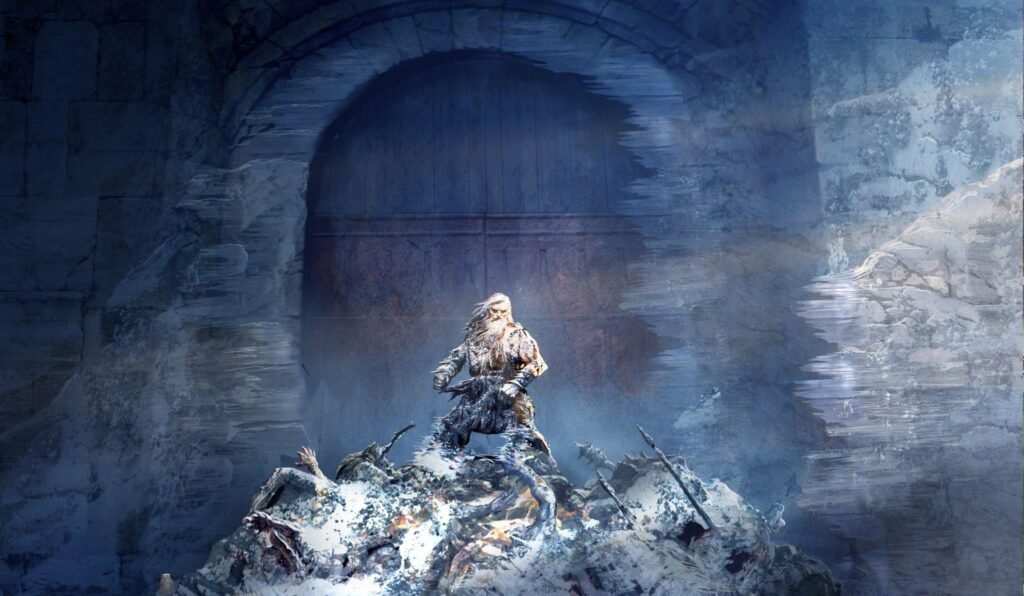
In a bit of a wrap post, Gallagher revealed that in the first week they recorded approximately 82 minutes of wind and string instruments.
About 82 minutes of winds and strings recorded this week with the amazing @stroma.ensemble featuring orchestrations by the excellent @hammckeich and @harrybrokensha , engineered by the one and only @soundjohn69 , produced by the best of the best @pin3hot , we have the splendid @janet.grab and #alanajanssen handling edits and programming as well as our wonderful intern @caoimhesadventures . We had it all super co-ordinated by the brilliant @katemulls with the lovely @_robyn_bryant_ .
Stephen Gallagher Instagram
Looking out for us all were the incomparable @musicgirl44 and @pbroucek , @joeyg3 , @clarknova @phobear @artypapageorgiou
It was a privilege to work with these amazing people to bring the score to life for #kenjikamiyama ‘s extraordinary film.
Surround yourself with a great team and anything is possible.
Kenji Kamiyama and Joseph Chou also happened to drop by and check things out.
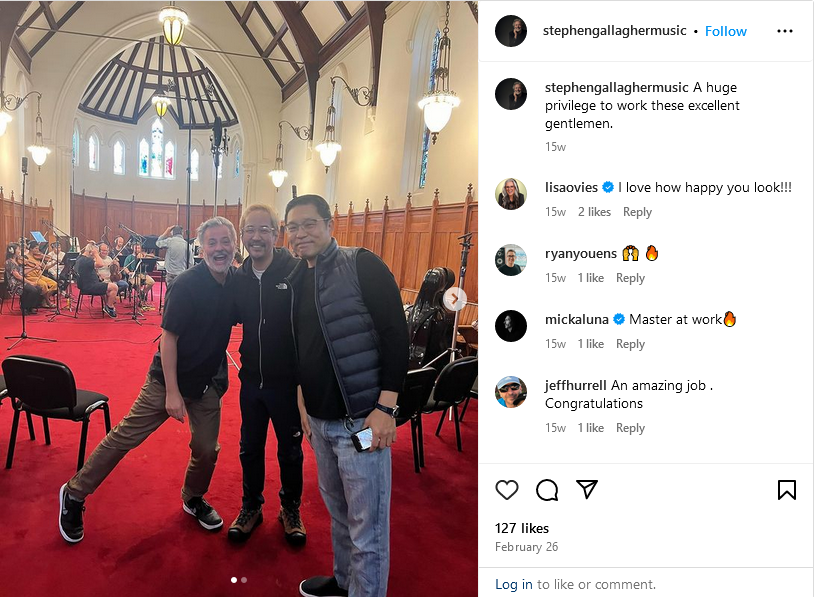
At this point, the soundtracking relocated to London to record other instruments — particularly brass and percussion — in London’s Angel Studios and at Air Edel.
Should be able to catch up on sleep the next 24 hours of travel – when you live in London, New Zealand really is the other side of the planet. Looking forward to @stephengallaghermusic arriving this weekend for our next batch of sessions. You didn’t think it was only strings and winds did you?!
Pin3hot Instagram

As well as brass, we know that they recorded Taiko (a traditional type of Japanese drum).

On his Instagram, Pin3hot referred to it specifically as an Odaiko (listen to one here). A little research is intriguing:
The odaiko was once used as a battle signal, and now features in Kabuki theater (a popular form of theater that has evolved from 17th-century aristocratic theater), Zen Buddhist ritual, and traditional dances.
Instruments of the World
Who might use war drums? Corsairs? Haradrim, perhaps?
After that, recording shifted to Air Edel for more intriguing instruments: shawms and crumhorns, what we believe are Tibetan Singing Bowls, RAUSCHPFEIFE (Pin3hot: “all-caps to reflect its character”), and curtal.
At the beginning of May, Gallagher was back in Wellington for even more recording working with conductor Hamish McKeich (principal conductor in residence for the New Zealand Symphony Orchestra).

This most recent, and perhaps last, batch of recording seems to have involved choral singing. And weeping. Whatever could that be about? A funeral, perhaps? Time will tell.
